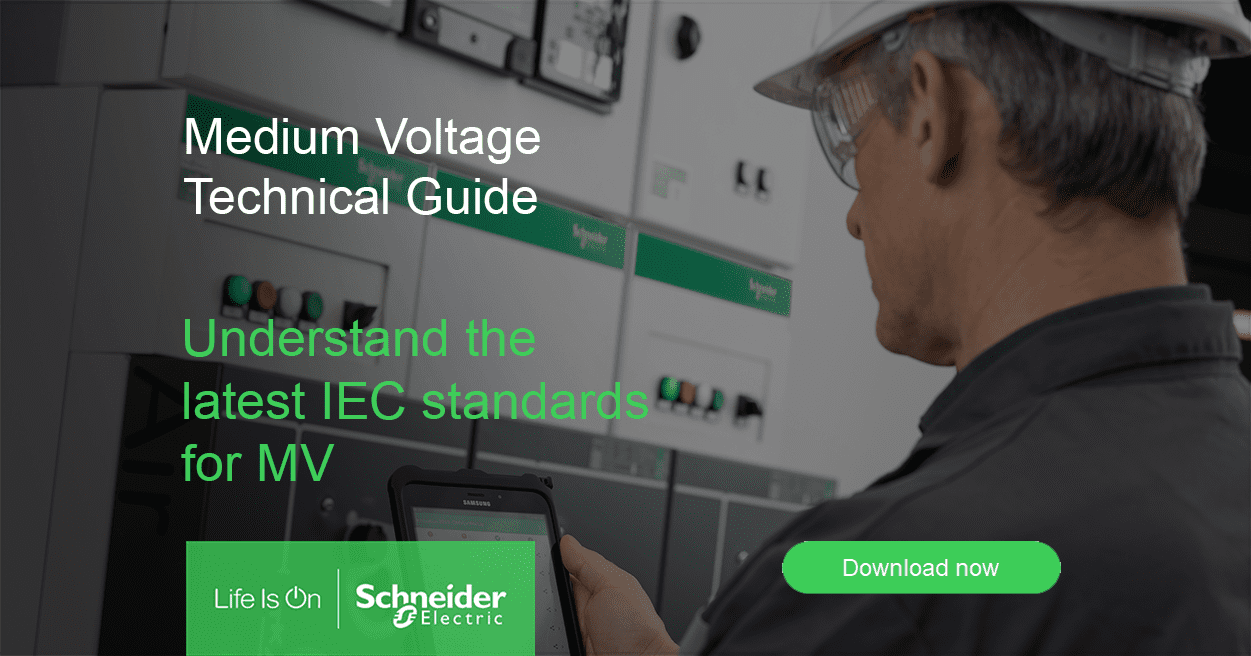Standards must evolve to ensure safer and efficient MV installations
Almost all products people use in their daily lives – such as electronics, cars, medical devices, and home energy systems — were designed to meet designated industry standards. For the consumer, this means that these products meet both the safety and performance requirements. This even more true for MV installations standards.

For manufacturers, standards are the foundation of their products. They establish technical specifications and procedures so that industries can develop and thrive. They’re also essential for compatibility and interoperability so that products from different manufacturers all meet the same basic ratings and construction. Because of standards, manufacturers save time by knowing what is required of a specific product for most locations around the world. Standards guarantee performance conformity, improve sustainability, and maximize reliability. For example, medium voltage equipment manufacturers depend on standards to produce products that provide for safe, sustainable MV installations.
The challenge: Standards that don’t evolve to meet the needs of MV equipment manufacturers can actually hold back businesses and impede safety improvements.
These changes benefit MV equipment providers and users in several ways
MV equipment manufacturers benefit from updated and/or clarified standards for a number of reasons, including:
- Introduce new opportunities to improve and innovate products: MV equipment manufacturers can better benefit from technology and materials advancements when standards eliminate restrictive requirements. For example, it was previously mandatory to use SIS-type control wires, but now manufacturers have additional options for metal-clad switchgear construction.
- Reduce challenges from end users: Clarifying standards reduces disagreements between end users and manufacturers on how to interpret the standards. For example, end users and manufacturers may challenge the interpretations about the size of infrared windows that can be used in metal doors or metal covers.
- Save time and money: It is costly and time-consuming for manufacturers to redevelop products that were designed based on obsolete standards.
For example, up-to-date standards can address MV installations’ sustainability challenges
When standards evolve to meet MV installations’ requirements, they help ensure safer, more efficient, and more sustainable installations for the future. For example, International Electrotechnical Commission (IEC) standards for MV switchgear are being updated to meet UN Sustainable Development Goals (SDG). Since 2020, any new work item for IEC proposals must include the identification of the expected contribution to SDGs. This leads toward building a more sustainable and resilient infrastructure based on environmentally sound technology.
To get more information on SDGs, download last release of the Medium Voltage Technical Guide
IEC and ANSI/IEEE standards are also becoming more harmonized as part of this evolution
IEC and American National Standards Institute (ANSI)/Institute of Electrical and Electronics Engineers (IEEE) are the main standardization bodies for MV installations. There can be significant differences in the ratings and performance required by these standardization bodies, which often leads to global manufacturers needing to produce two different products.

Fortunately for manufacturers, IEC and ANSI/IEEE standards are becoming more harmonized on performance and testing requirements. For example, IEC and ANSI/IEEE standards for circuit breakers differ but in recent years the standardization committees have worked toward converging type test requirements for MV circuit-breaker standards. For instance, the alternating current generator circuit breaker standard was harmonized in 2015 to a dual logo as IEC/IEEE 62271-37-013.
The benefits of harmonized standardization include:
- They provide a neutral and open environment that empowers innovators across borders and disciplines.
- They support the collaborative use and exploration of emerging technologies.
- Customers benefit because their MV equipment options will be the same for all regions.
Get a more in-depth look at how standards affect medium-voltage design
Access our free MV Technical Guide to learn more about how standards affect medium-voltage design. As an industry leader in MV and LV electrical distribution, protection, and control solutions, we have the expertise to guide you through changing regulations so you can make the right choices for your business.



